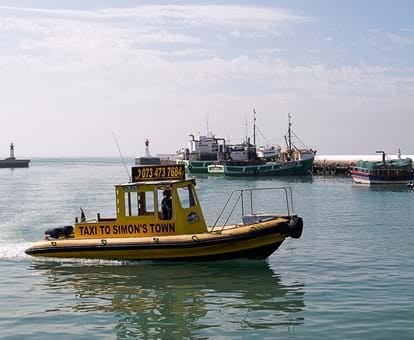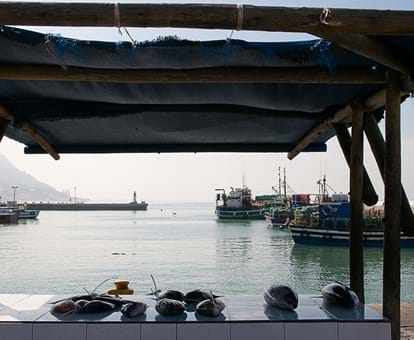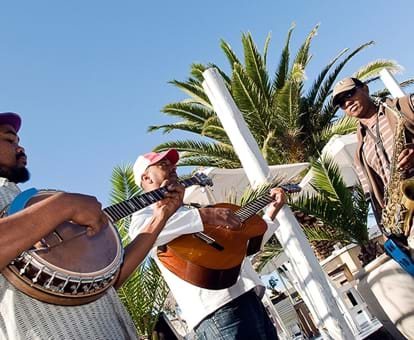By creating an account, I agree to the
Terms of service and Privacy policy
Choose your country and language:
Africa
Americas
Asia Pacific
Europe
WWhether it is food, art or adventure you're after, this seaside village has something for everyone. Part-sleepy fishing village and part-buzzing high street, Kalk Bay’s eclectic mix of people, historic buildings, cobbled streets, Bohemian bric-a-brac shops, vintage bookstores, art and antique galleries, colourful fishing vessels and excellent restaurants is what makes it so unique and charming.
What began as a source of lime and whale-related products has developed into the trendy fishing village of Kalk Bay on the False Bay side of the Cape Peninsula. Today writers, musicians and great restaurateurs have taken over the place of whalers, pirates and sea captains.
Shortly after your arrival in the Cape Peninsula hamlet of Kalk Bay, you will feel distinctly Bohemian, so enjoy the vibe and make sure you have the entire day to stroll around this quaint fishing town.

TThe lure of the good bookshop on the corner, the fresh coffee nearby, the craft stall on the street, the deliciously decadent fish and chips for lunch at the harbour, the mojito sipped at the Cuban-style restaurant at sunset and that late seaside dance party could see you visiting Kalk Bay year after year.
Kalk Bay, Western Cape
KKalk Bay, which lies between Muizenberg and Simon’s Town on False Bay, was first encountered by the Strandlopers (indigenous Khoi people who lived along the coast), who found seafood in abundance. Then came the colonists, in the form of lime workers, who processed huge stockpiles of seashells into lime (hence the Dutch name “Kalk”) for the Cape Town market.
The mid-1800s saw the rise of the False Bay whalers, who harvested the large pods of Southern Right whales that visit annually in search of warmer waters, a place to give birth and find a new mate.
Interestingly enough, a large Filipino community also sprung up in Kalk Bay, as if from nowhere. Some say the first Filipinos came from a shipwreck, others say they jumped ship in Simon’s Town. Whatever their origins, they sent word home that Kalk Bay was the place to be.
Most of them went back home after the United States took the Philippines from Spain in 1898, and the rest married within the local community and stayed on. They were soon joined by Portuguese, Italians, Afrikaners and Indonesians, who had one thing in common: a love for fishing.
TThe whalers are long gone, but the wonderful Southern Rights still visit these waters and show off their young. The fishermen still work down at the harbour, bringing in their fresh catches at noon and selling them off in a delightfully strident manner. You can pick up fresh fish here at great prices.
In the past century, Kalk Bay has taken on a creative character that has made it a favoured residential area for artists, writers, musicians, restaurateurs and nightclub owners. Many of its fine old buildings have been renovated and preserved, and buying a house in Kalk Bay is often a tedious process because no-one wants to leave the place...
Related article




